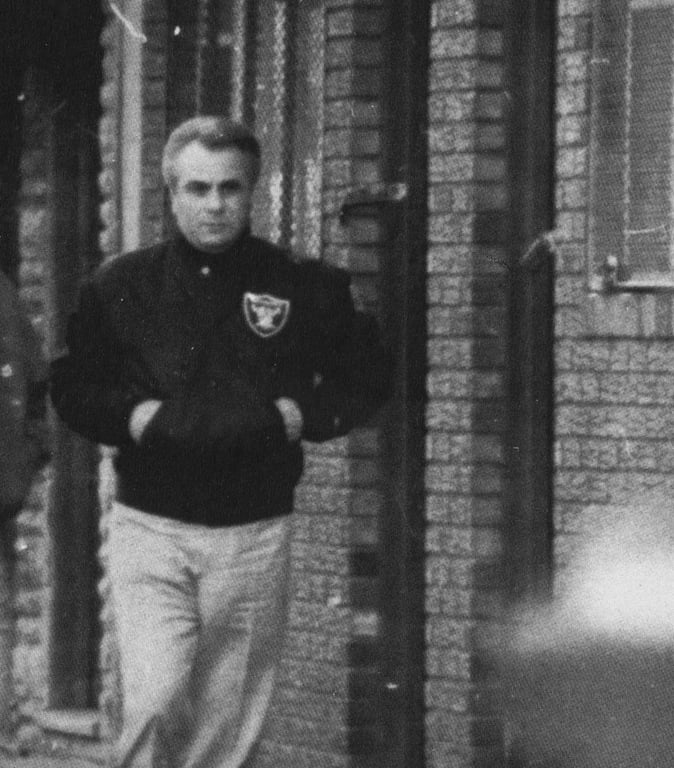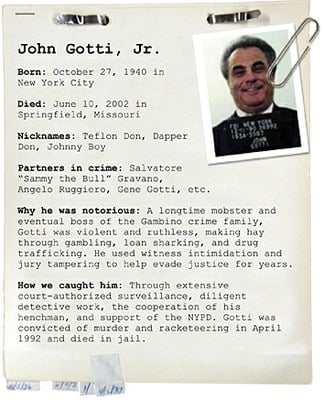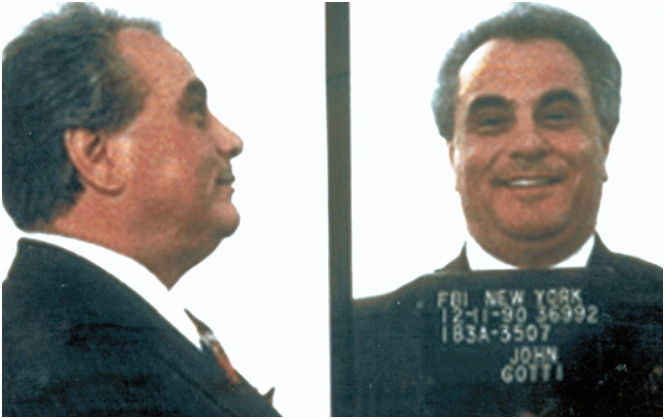For years, John Gotti eluded justice. As the notorious boss of New York’s Gambino crime family—once the most powerful Mafia organization in the United States—he earned the nickname the “Teflon Don” because criminal charges never seemed to stick.
But in 1992, after decades of federal surveillance, betrayal from within, and unprecedented courtroom strategy, the Teflon finally wore off. John Gotti was convicted in federal court of murder and racketeering and sentenced to life in prison without parole.
This long-form case study explores the intricate legal, investigative, and procedural events that led to one of the most significant organized crime convictions in American history.
I. The Rise of a Crime Boss

John Joseph Gotti Jr. was born in the Bronx in 1940 and climbed the Mafia ranks during the 1970s and early 1980s. After orchestrating the 1985 murder of Gambino boss Paul Castellano outside Manhattan’s Sparks Steak House, Gotti took over the organization in a bloody power shift. His flashy lifestyle and open defiance of law enforcement made him a media sensation.
Between 1986 and 1990, Gotti stood trial three times—twice for assault and once for racketeering—and won every case. Defense lawyers boasted, the media swarmed, and prosecutors despaired. It was during this period he earned his infamous nickname: “The Teflon Don.”
II. Law Enforcement Changes Tactics
Despite repeated acquittals, federal prosecutors at the Eastern District of New York remained determined. Under the direction of U.S. Attorney Andrew J. Maloney, and with the help of the Federal Bureau of Investigation (FBI), law enforcement shifted from pursuing individual charges to building a comprehensive racketeering case under the Racketeer Influenced and Corrupt Organizations Act (RICO).
The breakthrough came when Gotti’s underboss and confidant, Salvatore “Sammy the Bull” Gravano, agreed to cooperate with the government. Gravano, facing life in prison himself, turned state’s evidence in 1991 and became the highest-ranking Mafia member ever to testify against an American mob boss.
Gravano’s testimony would prove decisive.
III. The 1992 Trial: U.S. v. John Gotti
In United States v. John Gotti, et al., federal prosecutors charged Gotti with 13 counts, including five murders, conspiracy to commit murder, loan sharking, illegal gambling, obstruction of justice, and tax evasion—all under RICO statutes.
The trial was held in Brooklyn’s federal court, beginning in January 1992, presided over by Judge I. Leo Glasser. Leading the prosecution was Assistant U.S. Attorney Diane Giacalone, and later, a team that included John Gleeson, who played a crucial role in presenting the evidence.
Key Evidence:
- Wiretaps: Audio recordings made from bugs placed in the apartment above the Ravenite Social Club (Gotti’s Manhattan headquarters) showed Gotti discussing mob business—including beatings, murders, and internal disputes.
- Testimony from Sammy Gravano: Gravano testified over 9 days, detailing 19 murders he either witnessed or committed—including those allegedly ordered by Gotti. His testimony gave jurors an unprecedented look inside the Mafia hierarchy and its operations.
- Gotti’s own words: Wiretap transcripts revealed Gotti criticizing fellow mobsters and boasting about ordering hits, undermining his previously constructed public persona as a legitimate businessman.
IV. Defense Strategy and Collapse
Gotti’s lead attorney, Bruce Cutler, was disqualified due to conflicts of interest—primarily from potential involvement in Gotti’s criminal discussions on the wiretaps. This forced Gotti to rely on Albert Krieger, a respected defense lawyer but a relative outsider to Gotti’s inner circle.
The defense attempted to paint Gravano as an untrustworthy murderer looking to save his own life. But the sheer volume of corroborating evidence—particularly Gotti’s own taped admissions—left little room for doubt.
V. Verdict and Sentencing

On April 2, 1992, the jury returned a unanimous verdict: Guilty on all counts.
One of the most untouchable men in organized crime had finally been brought down. Gotti was sentenced to life in prison without the possibility of parole and sent to the U.S. Penitentiary in Marion, Illinois, where he was held in near-total isolation.
He remained incarcerated until his death from throat cancer in 2002.
VI. Legal and Cultural Impact
1. RICO Prosecution Blueprint
The Gotti conviction became a textbook example of how to dismantle organized crime using RICO statutes. Federal prosecutors across the country began using the same model: turn insiders, compile tapes, and present layered conspiracy cases that traced patterns of criminal activity rather than isolated events.
2. The End of an Era for the Mafia
Gotti’s downfall marked the beginning of the end for traditional organized crime’s dominance in New York. With their leadership exposed and internal loyalty undermined, the five families lost both power and credibility.
3. Public Fascination with the Mob
The trial fed public intrigue and inspired books, documentaries, and films. Gotti became both a cautionary tale and an enduring figure in American pop culture.
VII. Lessons for Modern Legal Practice
- The Gotti trial remains a seminal case study in:
- Witness protection and informant management
- Electronic surveillance in criminal conspiracies
- Trial strategy involving organized crime
- Jury protection and selection in high-profile cases
- Managing media in high-stakes prosecutions
It also underscores how long-term investigative patience, internal betrayal, and technological tools like wiretaps can finally pierce even the most fortified criminal empires.
Conclusion
John Gotti’s trial represented a seismic shift in how federal law enforcement approached organized crime. It took over a decade of investigations, wiretaps, and the ultimate betrayal by his second-in-command to bring him down.
But the conviction of the “Teflon Don” showed that no one—not even the most feared Mafia boss in America—is beyond the reach of the law.

